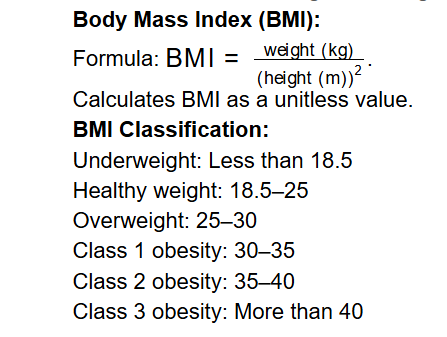 Home
Home
 Back
Back

Definition: This calculator computes your Body Mass Index (BMI) to determine if you are overweight. It uses your weight and height to calculate BMI and classifies it into categories such as underweight, healthy weight, overweight, or obese.
Purpose: It helps individuals assess their weight status to understand health risks associated with being overweight or obese, guiding lifestyle changes or medical interventions.
The calculator takes weight and height with selectable units and computes:
Unit Conversions:
Steps:
Calculating BMI and determining overweight status is useful for:
Examples:
Q: What does BMI indicate?
A: BMI indicates your weight status relative to your height. A BMI of 25 or higher classifies you as overweight, while below 25 is underweight or healthy, and above 30 indicates obesity.
Q: Why might BMI not be accurate for everyone?
A: BMI doesn’t account for muscle mass, bone density, or body composition. Athletes with high muscle mass may have a high BMI but not be overweight, while older adults with low muscle mass might have a normal BMI but excess fat.
Q: What should I do if I’m classified as overweight?
A: Consult a healthcare professional to discuss your health. You might consider lifestyle changes like a balanced diet and regular exercise to achieve a healthier weight, but individual needs vary.